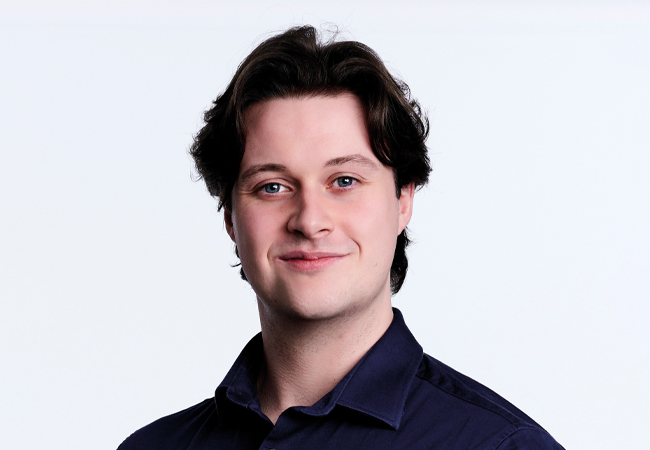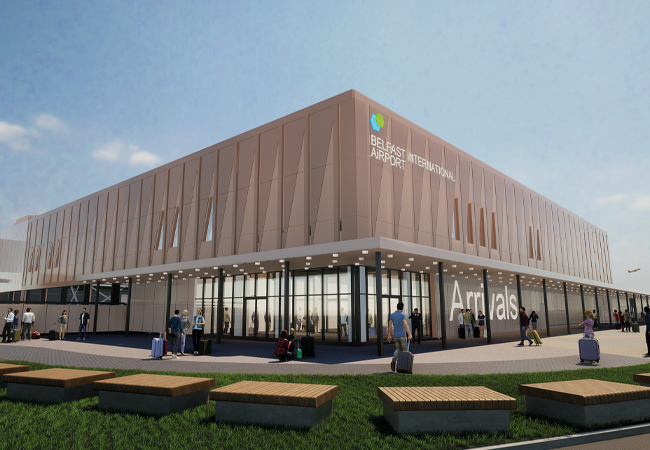
Entering the construction industry can be an intimidating experience. The projects move quickly, there are lots of disciplines with which to coordinate, and everyone seems to know more than you. It doesn’t help that people in the industry have a tendency to speak in three-letter acronyms – AHU, RFI, BMS, and VRF, to name but a few.
As a result of these initial gaps in understanding, I see many new starters struggling to envision a career path in building services. With this in mind, I want to share my experience of moving from being a graduate trainee to mechanical engineering project lead, and offer insight into the changing roles and responsibilities that a building services engineer experiences in the first years of their career.
I credit a lot of my development to a single project – the Belfast International Airport (BIA) Terminal Extension, which involved the construction of a brand-new, modern security building and the refurbishment of existing back-of-house areas.
I joined the project team just after the scheme began in early 2022, working under principal mechanical engineer Gerry McCorry. As a graduate mechanical engineer with five months’ experience, I had been involved with a variety of projects, but I had never seen a design through from inception to construction.
In that early stage of my career, I approached projects quite differently from how I do now. I tried to understand the fundamentals of construction: how does a project start; what are all the different stages; what are the dynamics of design team meetings; and how does building services fit into a larger, multidisciplinary design team? On top of that, of course, my main aim was to ensure the work was technically correct and completed on time.

Max McCone
The early stage of the BIA project taught me all the above and more. I gained fantastic exposure to designing for an aviation environment. This experience taught me to be creative with planning and phasing work, which I have applied to every project since.
I gained valuable insights into designing with sustainable technologies and practices, as the brand-new hall was served by air handling units (AHUs) and in-built reversible air source heat pumps, which provide heating, cooling and ventilation services for the hall.
To complete the sustainable package, these systems are powered by solar energy from the airport-owned photovoltaic (PV) farm located next to Belfast International.
So many of my lessons learned came from Gerry, who – with his 30-plus years in the industry – has built up a wealth of experience. He was more than happy to share his knowledge with me, and I still regularly refer to his 70-page-plus ‘lessons learned’ document, which has saved me more times than I’d care to say.
As the project progressed, we completed the initial Stage 4 design and progressed other projects while it was being reviewed by the client – this gave me new experience to take back to BIA.
Stepping into the role gave me new opportunities and… changed my priorities and thought processes
I returned to the project a few months later, during the value engineering (VE) phase, and my responsibilities had changed. I was tasked with designing systems independently and given more authority to delegate work, and found myself more focused on aspects such as fee and scope of works, as I better understood the project and the requirements of the project manager.
I found my technical knowledge had improved significantly from when I started on the project, in no small part because of a detailed CIBSE training course on ventilation design, which was kindly provided by the building services practice in Mott MacDonald.
This training gave me much more confidence in tackling the ventilation design independently and highlighted some detailed aspects that we hadn’t previously considered. This allowed us to improve our design compared with the original – an ideal outcome of the VE process.
With the VE phase completed, we moved into construction and, as that transition occurred, Gerry announced his planned retirement at the end of the year. Consequently, it was decided that the logical step was for me to take over as lead mechanical designer for the project and we began carefully managing the handover process. It surprised me that the handover process was straightforward.
I learned that the major difficulties during handovers are usually not related to technical design elements, but to understanding the project design decisions and history. I highly recommend structuring handovers like this for managers and current graduates when making transitions – we’ve had fantastic results with BIA, and it gave me a strong, confident platform from which to continue my development.
Stepping into the role gave me a whole new set of opportunities, specifically around engaging directly with clients. It also gave me a much deeper, more practical understanding of contracts and the legalities associated with projects, and how they guide our work processes. It also changed my priorities and thought processes when I work.

The Belfast International Airport Terminal Extension project taught McCone things that he has applied to every project he has worked on since
Previously, I’d jump right in, wanting to complete things as quickly as possible. Now, I take a much more balanced approach and consider a number of factors, such as: the fee available; the deliverable we need to produce; the best fit for resource considering the deliverable; the timescale we have to deliver it; what we need from other disciplines; and what we did previously – and the lessons learned.
Coming full circle, I also consider how to teach the more junior members of the team about the best way to approach the problem.
I have found the transition from graduate to project lead to be a really fulfilling experience, and I’ve completely altered my approach to work and how I view the industry as a whole – although I still think there’s far too many three-letter acronyms!
The one piece of advice I could pass on to those entering the industry is ‘don’t underestimate yourself’. I constantly worried about whether I’d be able to handle increased responsibility or whether I’d be exposed as some sort of imposter.
It turns out you usually know more than you think, and most people are more than happy to teach you, or give advice on anything you don’t know – they have all been in your shoes at some point!
Any current or incoming graduates who want some advice on managing their changing roles, or even just a chat about progression, please reach out to me on LinkedIn – I’m more than happy to offer any guidance I can.
About the author
Max McCone is a mechanical building services engineer at Mott MacDonald, and global vice-chair of CIBSE YEN

